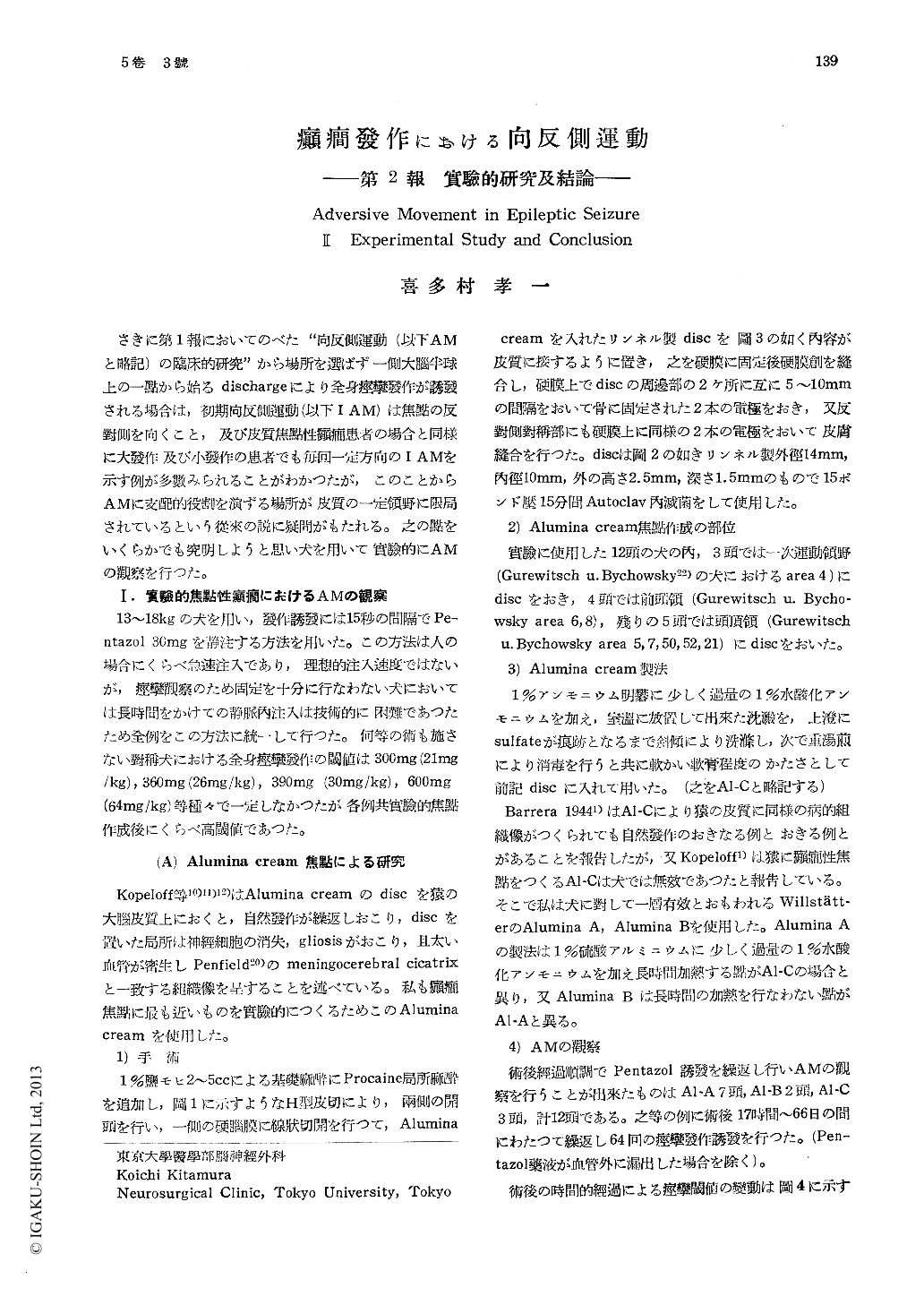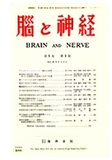Japanese
English
- 有料閲覧
- Abstract 文献概要
- 1ページ目 Look Inside
さきに第1報においてのべた"向反側運動(以下AMと略記)の臨床的研究"から場所を選ばず一側大腦半球上の一點から始るdischargeにより全身痙攣發作が誘發される場合は,初期向反側運動(以下IAM)は焦點の反對側を向くこと,及び皮質焦點性癲癇患者の場合と同様に大發作及び小發作の患者でも毎回一定方向のIAMを示す例が多數みられることがわかつたが,このことからAMに支配的役割を演ずる場所が皮質の一定領野に限局されているという從來の説に疑問がもたれる。之の點をいくらかでも究明しようと思い犬を用いて實驗的にAMの觀察を行つた。
The author confirmed in the previous report that the initial adversive movement occured in the direction opposite to the side of the focus wherever it might exsist in the cerebral hemisphere except for the temporal region, and that in the many cases of non-focal types of epilepsy such as grand mal and petit mal the direction of the initial adversive movement was consistent.
From this point of view, the traditional theory, that the adversive movement was represented only in the circumscribed cortical area, i. e. the so-called adversive field, seems to be ques-tionable.
a) In the dog it was uncertein to produce epileptogenic foci (spiking foci) with Alu-mina cream in the cerebral cortex.
b) The adversive movement in the convulsive seizure induced by slow intravenous inject-ion of pentazol solution was studied in dogs having strychninized foci in the cerebral cortex. During the convulsive seizure, the side towards which the adversive movement was directed changed frequently, but the direction of the initial adversive movement was constant and opposite to the strychn-inized side in each seizure in all strychn-inized dogs.
c) In the induced general convulsive seizure of the dogs, in which the unilateral hemi-spherectomy leaving the subcortical nuclei had been performed, the direction of the adversive movement was altered frequently during the seizure, but the side towards which the initial adversive movement was directed, was constantly opposite to the hemispherectomized side. This might be presumably due to the dominant activity of the subcortical nuclei on that side caused by loss of inhibition from the cortex.
d) Thus, it could be stated that in the epile-ptic convulsive seizure the direction of the initial adversive movement would be con-stantly opposite to the side of the domi-nantly discharging subcortex.
e) From the clinical and experimental studies it might be inferred that even in many (70%) non-focal cases of grand mal and petit mal the subcortical nuclei have more dominant discharge on one side than the other.

Copyright © 1953, Igaku-Shoin Ltd. All rights reserved.


